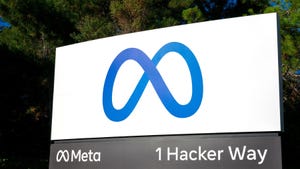Telx to Add Capacity in Key New York Carrier HotelsTelx to Add Capacity in Key New York Carrier Hotels
CEO says pent-up demand for well-connected space on island means time is right

There may be a glut of data center space in New Jersey, but the market across the Hudson is a different animal. As customary, available quality data center space in Manhattan is hard to come by and costs a lot of money.
Telx, a key player in the New York data center market, is getting ready to loosen the supply by bringing new capacity online in two of the three buildings it operates in, Telx CEO Chris Downie said.
The buildings – 32 Avenue of the Americas and 60 Hudson Street – are both key connectivity hubs not just for the U.S. but for the global Internet. New York carrier hotels like these are the reason companies are willing to pay the premiums that come with using data center space in Manhattan when there are tons of new space ready to go in New Jersey.
“New York City – in the buildings that we run – hasn’t had that amount of available capacity in quite some time,” Downie said. “It’s a great time to be bringing on that capacity, because the demand on the island has to go somewhere.”
Telx is going to launch 15,000 square feet of data center space on Avenue of the Americas and 17,000 square feet at 60 Hudson. Telx is leasing one of the four floors at 60 Hudson operated by wholesale data center provider DataGryd.
Google Offices a Problem for the Market
The company also has eight suites at 111 8th Avenue, another major carrier hotel owned by Google. Those suites are filling up, Downie said.
The building on 8th Avenue has been a problem for the New York data center market ever since Google bought it in 2010. The company bought it primarily for office space, but it is home to a lot of data centers because of the high density of network carriers that interconnect there.
We’ve heard from multiple sources that Google has pretty much taken the building off the data center market. The new owner has not been letting data center providers renew their leases there once they expire.
One well-known casualty is Internap. The data center provider’s lease in the building runs out at the end of this year, and it has been moving its colocation operations to a new facility in Secaucus, New Jersey.
Downie said Telx’s presence at 111 is safe. He declined to say when its lease there runs out, but said it would be several decades before that happens.
What About Sabey?
Telx CEO isn’t worried about competition with Sabey Data Center Properties’ skyscraper in Lower Manhattan, which already has a lot of space built out and a lot more ready for redevelopment.
“Sabey has space, but I would say there’s a different value proposition between our environments and Sabey,” he said. “It’s intended more for wholesale demand in the marketplace.”
Downie doesn’t deny that Sabey – which also happens to be Telx’s landlord in the Seattle market – may offer retail colocation too, but the former Verizon building doesn’t yet have the level of network density Telx offers at its New York facilities.
Rich connectivity is the reason data center space on the island is in demand. “Because why else would you position yourself in New York? It’s not an inexpensive place to do business,” he said.
Massive New Jersey Assets
To be sure, Telx has a huge play in the New Jersey market as well. The company has three buildings there, newest one of them the largest data center investment it has ever made, according to Downie.
Finished last year, NJR3 in Clifton was the first data center the provider built from the ground up. At 350,000 square feet total, it provides 100,000 square feet of sellable data center space.
Across its six facilities in the New York metro, Telx has about 750,000 square feet of inventory total and the ability to serve just about any data center need anybody may have.
No Geographic Expansion Plans
Downie has no plans to enter any new markets in the near future. The company has been taking space in major hubs like New York and San Francisco as it becomes available.
About 18 months ago it entered Silicon Valley with 55,000 square feet of sellable space at the Vantage campus in Santa Clara.
The company also has 55,000 square feet in Seattle and 10,000 square feet in Portland – a key landing point for submarine cables that connect the U.S. and Asia. The Portland site is important strategically, because Downie expects demand for overseas connectivity with Asia to grow in the near future. “We want to be part of that,” he said.
For now, the strategy is to focus on core markets – New York, Chicago, San Francisco, Dallas, and Atlanta. “There’s a lot going on in those markets, so that’s where you’re going to see us focused,” Downie said.
Read more about:
North AmericaAbout the Author
You May Also Like







